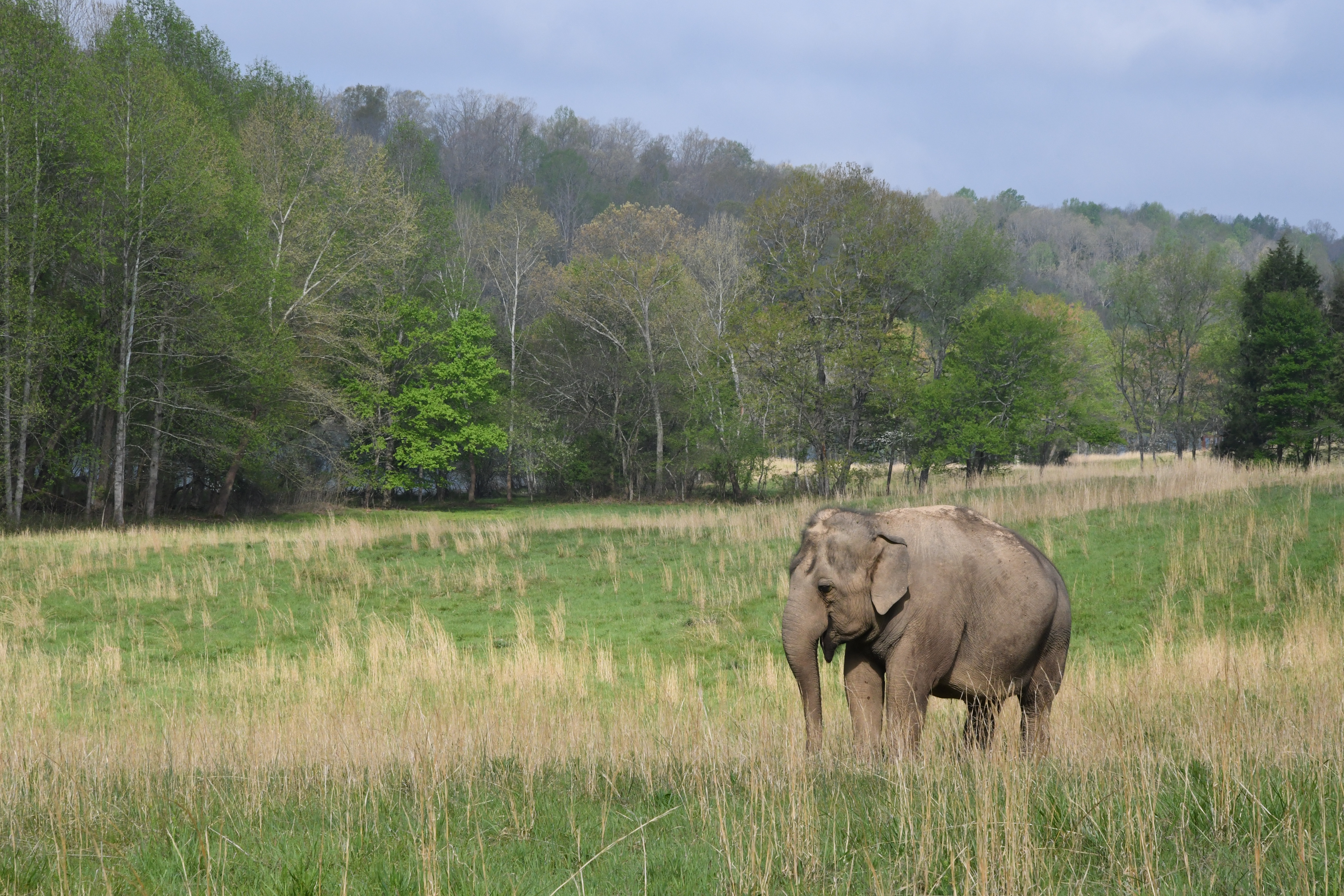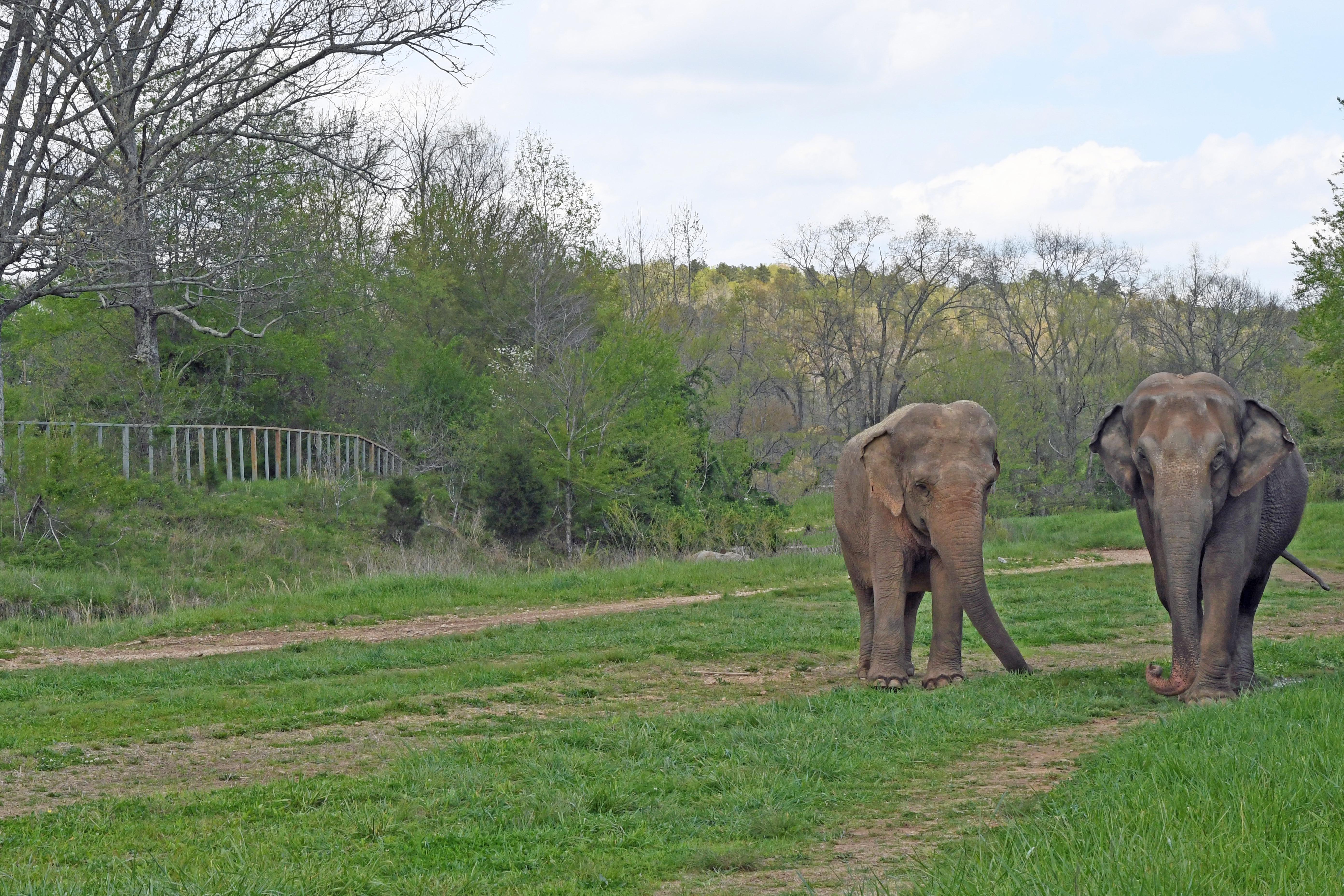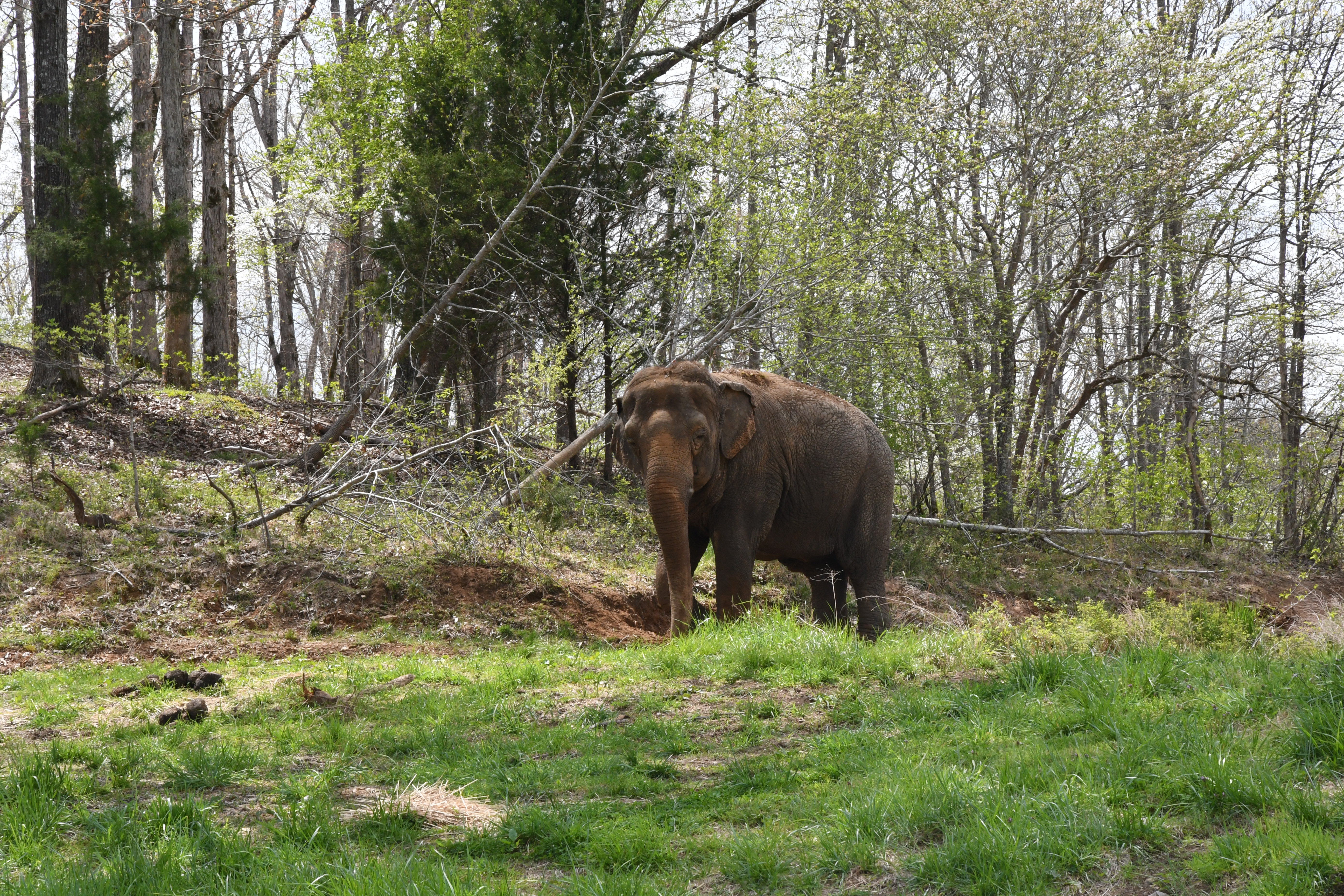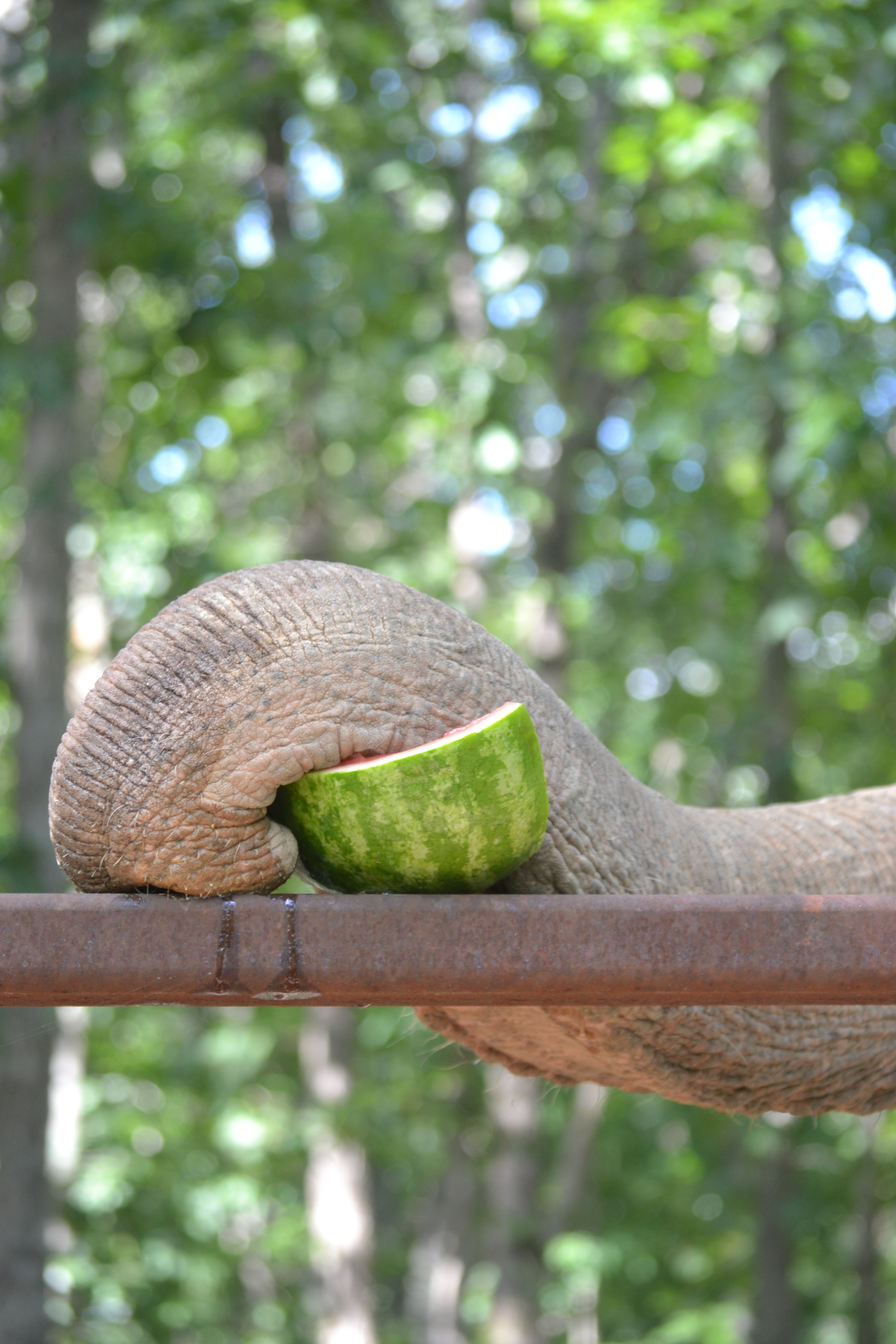Spring is in full bloom at The Sanctuary, which means muddy wallows, green grass, and trips to the lake.
Tange, Flora, and Sukari are spending more time together in the same habitat space, mudding in the many wallows they created and spending time at the Pipeline and Plateau eating the fresh spring grass. Caregivers have been providing lots of spring enrichment for the three Africans, including Mazuri bags stuffed with jelly beans and hay. Each elephant devoured their special enrichment in their own way, but Caregivers especially enjoyed watching Tange tuck the bag under her tusk and eating the treats out of it as she walked around the habitat.

Nosey is learning new behaviors very quickly as she continues to make progress in Protected Contact training. She is spending much time each day tasting all the new spring grasses as she explores all areas of her habitat.

Tarra has been venturing farther out in the big habitat, away from the barn! At the beginning of the week, she spent a lot of time by The Sanctuary’s 25-acre lake and in Turtle Pond Pasture.

Shirley has been enjoying the rain-filled mud wallows in the habitat areas surrounding the barn.

In Q Habitat, introductions continue between Sissy and the other elephants. Minnie, Ronnie and Sissy have shared space several times this spring, and Caregivers have watched as Billie shared the fenceline with Sissy and Ronnie during their ‘playdates.’ Billie and Ronnie have been very playful and tactile with each other, taking turns putting their trunks on each other’s heads and smelling the other’s ears and eyes. Elecam viewers have been excited to see that all of the Q elephants—Debbie, Minnie, Ronnie, Billie, and Sissy have been taking regular naps in the habitat as this indicates that they are feeling safe and comfortable with all the new and growing friendships.


Feeding a 9,000 Lb Elephant Takes a Team
In the wild, elephants will spend 18 hours or more a day foraging for food. In captivity, an elephant’s life looks very different. Planning and maintaining a high-quality diet for an elephant that weighs 9,000 pounds takes teamwork and professional oversight.
At The Sanctuary, each elephant has an individual dietary plan to meet her specific nutritional needs. Caregivers start their day at 7 a.m. and work into the evening, preparing meals for the elephants and then delivering them in the 2,700-acre habitat. Restaurant-grade produce is ordered weekly and has to be chopped into portions for meals. Grains are measured, supplements weighed and hay divided. Diets change seasonally as the elephants take full advantage of the diverse natural habitats.

ANNUAL ELEPHANT GROCERY LIST
An elephant’s weekly diet includes hay, Mazuri, spinach, peanut butter, fresh produce such as carrots, apples, sweet potatoes, celery, bananas, squash, broccoli, oranges, grapes, watermelon and nutritional supplements to assist with normal age-related changes.
Additionally, Caregivers provide food in goal-oriented ways that encourage natural foraging skills, as well as sensory activities, walking longer distances and enhancing brain function. For Billie, a 56-year-old Asian elephant who has arthritis, Caregivers provide a trail of food for her to follow with a favorite treat at the end. This promotes foraging and encourages her to take longer walks to alleviate stiff joints.
Providing Tange, Flora, Sukari, Nosey, Shirley, Tarra, Sissy, Debbie, Ronnie, Minnie and Billie with the care they need to live a healthy life takes a team that INCLUDES YOU.
Help feed an elephant through our spring appeal!
We hope you will join us in 2018 as we celebrate another year of health and well-being and a future of gold-standard care for all.
